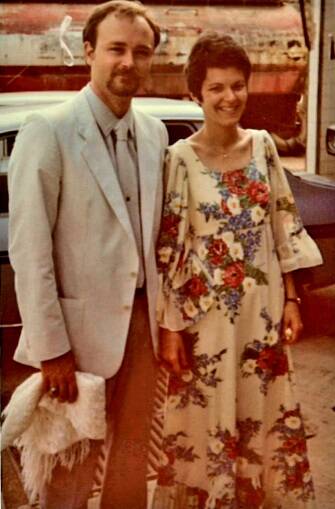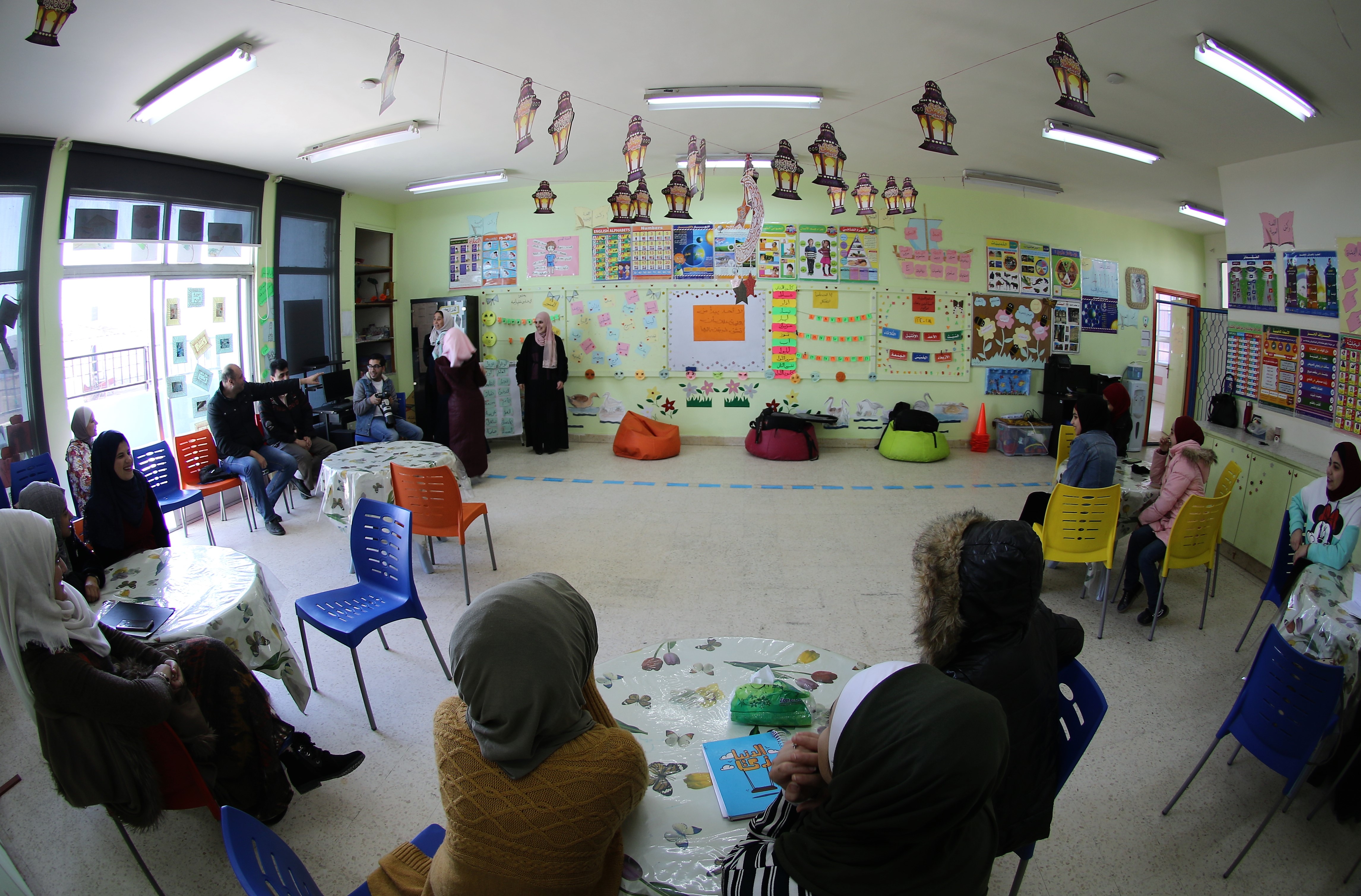The first in our series of letters from our Founder & International Director, Dr. Curt Rhodes, on what it means to serve the last, and where our work is headed.
The promise: Beirut, 1982
|
I don’t think I ever knew her name. She was one more frightened young woman in a long string of the young and the old who fled their homes in suburban neighborhoods in Beirut (Palestinian refugee camps, actually) as the bombs started falling. And she was one of tens of thousands of frightened civilians, seeking refuge, somewhere safe, to stay alive. It was the summer of 1982. I was assisting with triage in a pop-up dispensary for refugees in the Sanaaya neighborhood of West Beirut. She showed up at the clinic needing more than medical support: she was mentally challenged, in her second pregnancy and very confused about why she could not stay in her house on her street in one of those suburbs. I saw her once or twice that summer of 1982, enough to remember her face and her medical circumstances. |
|
Then, in a whirl, the bombing of the city stopped, militia fighters got safe passage out of Beirut, and families returned to those bombed-out suburbs. The bombing had stopped, but the terrible aftermath was just being revealed. The last time I saw her was through the lens of a CNN camera as the crew panned over the streets where civilian refugees had been massacred. She was face-down on the ground. Lifeless. Blood soaked into her black dress. A casualty of…war.
I remember asking myself, who wanted her dead? She was a threat to nobody. And then realizing perhaps no one wanted her dead. At least her, specifically. She was collateral. Along the way, her invisible life was erased without a peep. Like she wasn’t really there to begin with. And 40 years ago, in the rubble of bombed Beirut streets, is when I started feeling, not only observing, what it is to be last: who has the least ears hearing them, the fewest eyes seeing them?
What keeps them last and least? And what did their lastness mean to me?
I’ll start with the consequences of that last question, first.
Inside of my deepest self, almost in a whisper, I unexpectedly promised that young woman in the bloody black dress that her death would not be a forever-loss. Her death would become a forever-gain. That because of my knowing her, even briefly, other young people would get chances for abundant lives instead of stunted lives—that their lives would not go unacknowledged.
That was my unexpected promise to her. I had no idea what unexpected turns I would take because of that promise.
Friendship. Mentorship. Relationship: Questscope on the ground
My promise to that young refugee mother in Beirut sparked the beginning of a lifelong journey to see and to serve the last. I discovered that the further I walked down that road with them, the more they became my teachers, my guides. My promise led me to see more clearly the promise that their lives hold.
How I channeled this promise into concrete action began in earnest with a project for “street kids” in the mid-1990s in Amman, Jordan. We discovered very complex survival strategies of teens and pre-teens – always hungry, always dodging someone’s fists, always making deals (cigarettes for sex, anyone?). In short, amazing street smarts. Way beyond me if you put me on their streets.
What made the biggest difference for them and for us? Friendship. Mentorship. Relationship. A person to rely on. But relationships have unexpected outcomes. Most of our “street” kids were either at risk of delinquency and incarceration or “veterans” of incarceration. So, what more natural than for us to have a program for mentoring in youth correctional systems?
Once we obtained permission for a civilian, volunteer mentor to hang inside a correctional center with his or her “mentee,” tons of institutional abuse evaporated. There were eyes to see what was happening to those previously unseen kids. And with a mentor, we got permission for youth to go “outside.” In fact, “delinquents” could not be found inside juvenile halls during the day. They were out doing things with their mentors. We improved, and then changed, an entire governmental structure by gaining recognition of relationships’ potential for rehabilitation – of the youth and of the system. Living the action behind my promise had begun.
Impact: An education fit for a meaningful future
Then there was the issue of education. Or more accurately, the lack of one. Being incarcerated meant no school for however long a kid was “inside.” And youth at risk of incarceration were also dropouts. But getting back into school was impossible after 2 years of non-attendance. Trouble was, there were tens of thousands of never-schooled kids, facing never-to-be-opened doors to their futures.
Why not work with the department of education in Jordan to explore a new application of the formal, certified curriculum? An application that could be delivered in 2 years to teens who were blocked from formal education, so that they could finish 10th grade? And then go on to finish high school. And get a shot at university, trade school or running a small business. So, that’s what we did. We worked hand-in-hand with education authorities to come up with what should be taught in a shorter period of time, and develop our pedagogy for it how it should be taught.
The key to volunteer learning is a personal relationship (remember, if “our” students get bored, they vote with their feet – they just don’t show!). So, we developed learning facilitators to be educational mentors who fan the “Calvin-curiosity” that is already there. Calvin (the one with Hobbes, aka stuffed tiger) was asked by his dad why his grades were so bad since Calvin was smart enough to name off all the dinosaurs and all the Pleistocene and other-cene ages in which they lived. Calvin replied, “they don’t talk about dinosaurs in school!” Our facilitators can talk dinosaur. Fluently.
We changed how we engaged with youth so that they wanted to learn, again. The system changed because large numbers of uneducated youth are problematic for a society—and we provided a solution. The youth changed because someone believed in them. And, with us, they got two obstacles removed: a legal way to get through the 10th grade door that was blocked and a learning style that made sense:
"All I need is a chance to express myself. When I left school…it didn’t mean I had died. It meant I had learned what I could and going back to school would not mean I could learn what I want. My abilities are as high as the sky and school does not fit me anymore. (Now) I learn through conversation, by listening, and by expressing myself in writing.”
Once alternative education became a real option, girls could become conspicuous by their absence from that opportunity. In one community, a 14-year-old refugee did not attend class one day, and her facilitator learned that she was getting her hair done for her wedding the next day. What!? There was a rush to talk to her mother. The upshot? With many younger children to feed and a mother’s legitimate concern for the future of a daughter, parents and young girl made the decision to marry her for a bride-price to an older man. Which would help with feeding her siblings and give her a husband to care for her. But not at age 14!
We realized that this issue largely comes down to family economics—parents will find a way to make ends meet, and sometimes early marriage is the only option. So, we gave them another option: a food voucher program for families. Girls could stay in school. As one of them remarked, “I got a school certificate instead of a marriage certificate. Now I can make some other decisions, too!” These mothers are serious about keeping their daughters and sons in school. So the food voucher program turned into a catering kitchen group business, with the mothers as the chefs. This required our raising some capital for a stove, oven, fridge and freezer, plus the license and fees to sell food. All scalable. We are now partners with the last and the least, right? A wildly exciting paradigm!
A promise fulfilled – and yet to be fulfilled
There are lots of ways to describe who the last and least are – those on the edges of society for whom I whispered my promise to the young woman in black that they would get chances for abundant and not stunted lives. I mostly think of them as friends I have yet to meet. As high-potential youth to invest in. As people who need rugby-style blockers to give them an open field to run with their ball. As people who thirst for spiritual growth – for external social and economic freedom to have choices and personal internal freedom to make wise ones. To be free of self-doubt and transformed by relationships of community and love.
I whispered to myself a promise 40 years ago to a young mother in a black dress killed in a war. The fulfillment of that promise has looked like many different things, some of which include the work described above. Much has been done—but there is still much to do. Forty years on and I am still as energized as I was then. Maybe even more so!
Now, Questscope’s promise to the last and the least has been taken up by the next generation of young Questscope leaders in the Middle East. They have really different ways to think about how to keep that promise. Things I would never have thought up! But our heartbeats are in sync. Our music comes from the same song sheet. Our shared commitment to relationship, to friendship, to love is totally there. This might be what amazes me most—that the promise lives on, continues, grows and evolves alongside a wider net of people than I could ever have imagined.
From 1982 to 2022, there has been a lot of unexpected passion in that promise. I am ready for 40 more years of this passion to put the last, first! Our Questscope family on the ground is too. There are more unexpected things to come, for sure. But unexpected is what we do together, right?
So glad we are together, in passion and in purpose!
Curt




